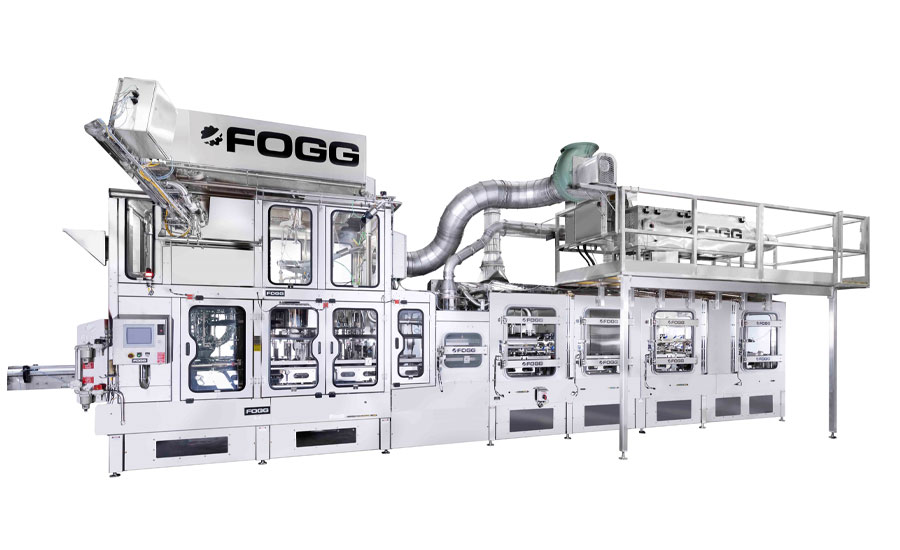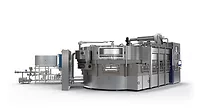Filling technology combining key elements to streamline beverage operations
Cold aseptic filling, improved sanitation methods driving filling equipment innovations

Image courtesy of Getty Images
As consumers are becoming more and more health-conscious, the demand for beverage products without preservatives has increased. To address this demand, experts note that in recent years, aseptic technology has become more established as a filling technique within the beverage industry.
“Here in North America, I see aseptic filling technology taking a stronger foothold,” says Barry Fenske, technical sales of filling at Franklin, Wis.-based Krones Inc.
Traditional methods that combine sterilization with hot filling have not been suitable for products that are sold as “fresh” and “natural,” whereas cold aseptic filling has become a common technique with beverage manufacturers for products such as ultra-high temperature (UHT) milk, fruit juices and sports/energy drinks, experts note.
Further, as aseptic filling systems generally combine several elements into a single, integrated production line; this flexibility means that it is suitable for a wide range of products, Fenske explains.

Image courtesy of Fogg Filler
“Designing flexibility into the filler is critical,” Fenske says. “This allows for running several product types on the same filler. There are machines that can run carbonated or non-carbonated beverages, hot or cold fill, all on one machine.
“We incorporated a design years ago that allows for quick product changeovers of 10 minutes or less for compatible products. Basically, the filler is filling the last bottles with ‘flavor A’ while the blender is ramping up for the ‘flavor B.’ Our LineXpress technology allows for quick changeover of the entire line,” he continues.
Meanwhile, cans and carbonation are current trends also impacting the filling industry, notes Morgan Hill, marketing assistant at Fogg Filler, Holland, Mich.
“Spirits demand is on the rise as well since the pandemic,” she says. “We receive requests for nearly all liquids to be filled. From hot filled products, to juice, to dairy, to spirits, we are frequently receiving requests.
“We are seeing more and more requests for turnkey solutions.” Hill continues. “Customers are not just seeking out a filling machine ― they want a complete package with controls integration from a single source, making the purchasing process much simpler and less time-consuming.”
Flexibility, speed remain key
With SKU proliferation and changeovers impacting beverage operations, the “biggest” trend is customers wanting to run more and more product types, resulting in original equipment manufacturers (OEMs) developing machinery that accommodates that flexibility, Fenske says.
Hill notes that while most of the products Fogg fills are in rigid bottles, companies have increased the number that need to be run on the same machine. “What used to be five or six bottles is now 15-20, and OEMs have had to accommodate,” she says. “Machines need to be more flexible and have quick changeovers.
“Quick start valves have allowed Fogg to increase filling speeds,” she continues. “Universal change parts allow quick, flexible and efficient changeovers between bottles on a single machine. Articulated jaw cappers cover all closures with the exception of straight corks in the wine industry. Fogg has started utilizing PlantPAx for controls packages, increasing trackability and allowing monitored production.”
Krones’ Fenske notes that for can filling, it’s becoming more popular to discuss having two seamers in a block to one can filler to help in changeover times for lid diameter changes.
Meanwhile, for speed and “better hygiene,” Krones recently introduced a smaller can filler called the VFS-C with Compact Clean Room. “Since we can do a [clean-in-place] (CIP) and external cleaning at the same time, we can cut the cleaning time in half, which means more up time,” Fenske says.
For bottle filling, Krones introduced Dynafill, which fills a bottle in 0.5 seconds and crowns the bottle after filling in the filling valve, Fenske notes. This innovation for beer filling into glass bottles combines the filling and capping process on one single machine, he adds.
To better accommodate craft distilleries as well as start-ups and low production facilities, Hill notes that Fogg released its SP-63 Filler, which is smaller than its typical filling machine. “This filler/capper can be utilized across all markets that we serve and makes a great lab filler as well,” she says.
Better efficiencies, non-contact filling on the rise
With the search for higher levels of sanitation, better efficiencies and product quality metrics, more beverage manufacturers are not only moving toward aseptic filling solutions, but non-contact filling is on the rise as well, experts note.
Hill notes that Fogg makes all machines with tool-less “quick change” execution.
“We have reduced the amount of time, complexity, the number of tools, and parts are ‘poka-yoke’ to eliminate mistakes,” she says. “Fogg also offers multiple ways of sanitizing equipment to keep it clean, safe, and reduce liability.”
Additionally, Fogg utilizes UV technology for a dry sanitation of both bottles and caps, Hill says.
In March, Fogg Filler announced its newest sanitizing solution: Ultrazone O4, which utilizes vaporized hydrogen peroxide. The sanitization process can perform at a 3 to 6 plus log reduction, resulting in a near-aseptic rinse for bottles, the company says. The Ultrazone O4 solution comes complete with the Ultrazone O4 skid and fully enclosed, custom rotary bottle sanitizing/rinsing turrets to match a customer’s exact requirements, it adds.
Krones’ Fenske notes that handling parts on the fillers are mostly quick-change nowadays with push button quick release, as opposed to a wrench and bolt in the past. “Also, separate recipes in the [programmable logic controller] (PLC) for each SKU, brought up for that SKU is at the touch of a button. No or very little fine tuning [is] required after changing to another SKU,” he says.
Additionally, as some of Krone’s fillers can monitor the volume or weight filled, and if the target metric is starting to move off, the PLC can automatically make adjustments to get it back on target, he notes.
“CAT 3 safety is standard now,” Fenske says. “As far as hygiene, each filler is built to the highest hygiene standards. It’s up to the operator to follow recommended cleaning and maintenance guidelines we give to keep that filler in tip-top shape.”
Looking for a reprint of this article?
From high-res PDFs to custom plaques, order your copy today!






